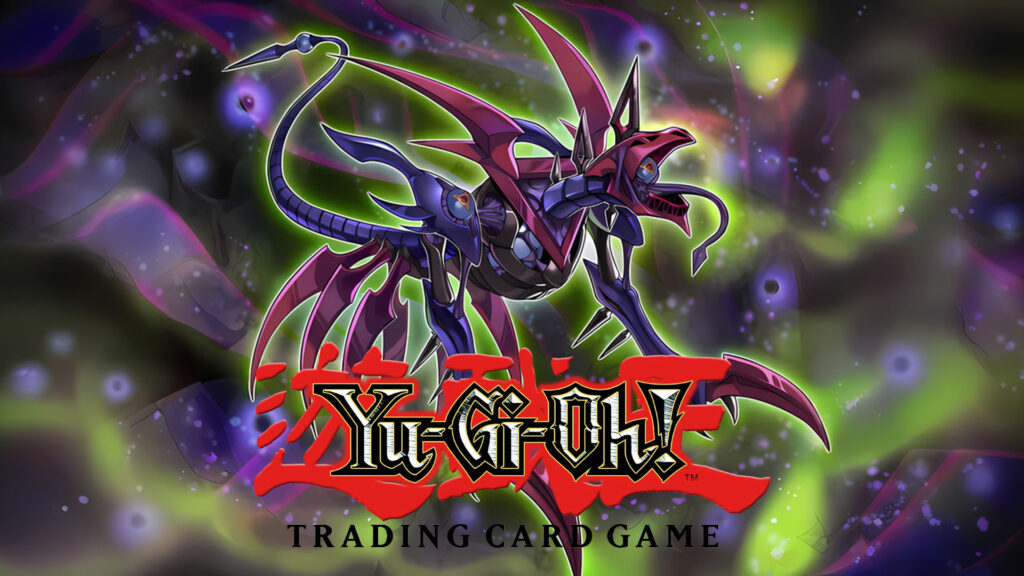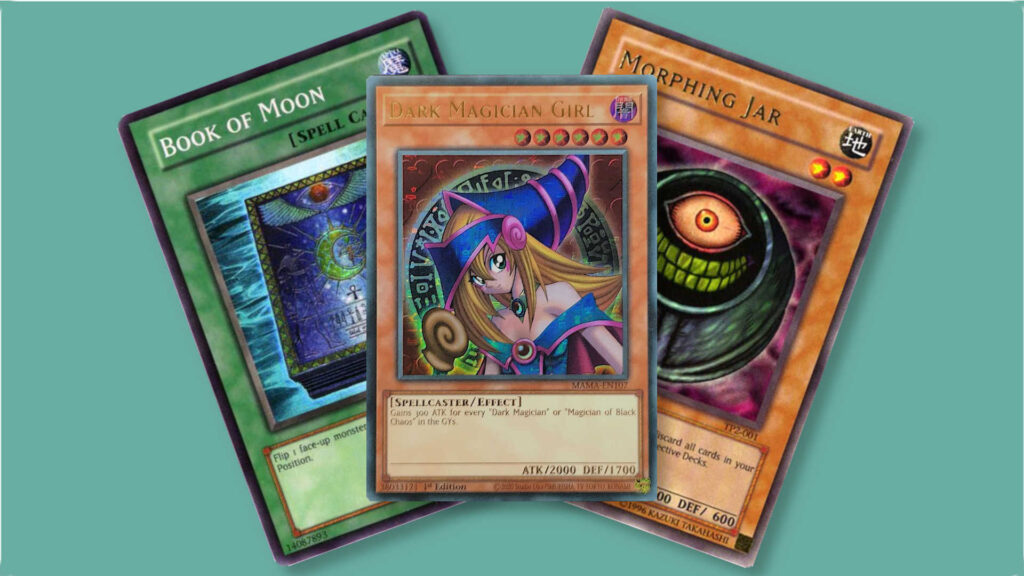One thing that sets Yu-Gi-Oh! apart from other card games is the varied and imaginative archetypes that it employs. These cards contain multitudes and draw from a bewilderingly huge range of sources. You can build a deck based around anything from Dante’s Inferno, to 90s era comic book antiheroes, to Dragons that are also Maids for some reason. In today’s article, we’ll go over five archetypes that draw their inspiration from truly unexpected sources. Let’s get digging.
Table of Contents
Toggle5. Gunkan
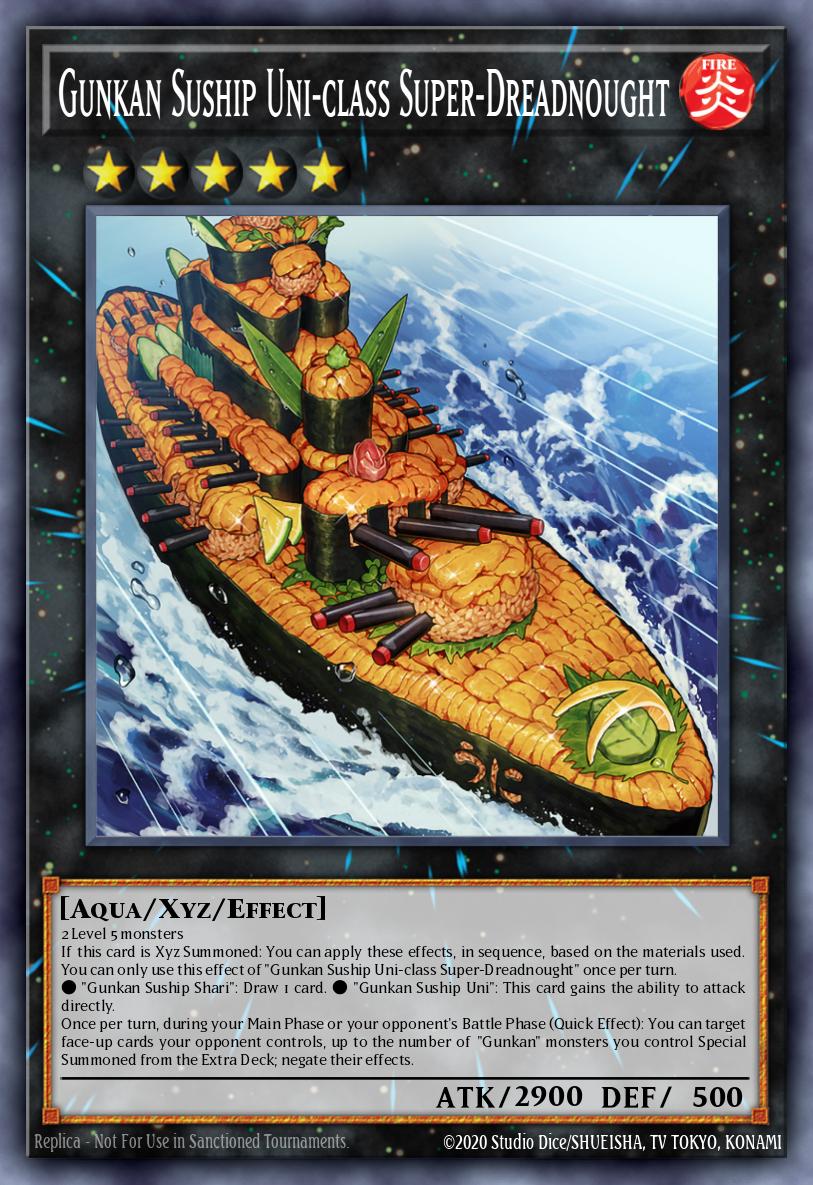
If you’ve ever eaten sushi, you’ve almost certainly had a maki roll. A small helping of rice, wrapped in dried seaweed with a sweet treat like salmon, egg, or avacado at the center. A Gunkanmaki roll is like a regular maki roll, except rather than being circular it’s shaped like a little battleship. The Gunkan archetype in Yu-Gi-Oh! takes this ship based culinary tradition and interprets it very literally.
The Gunkan archetype is comprised of Aqua XYZ monsters that are literal Sushi warships, or “Suships” as the game calls them. With designs based on WW2 era Yamato-class battleships, but constructed from rice, and veggies rather than steel and heavy ordnance. What makes this archetype particularly sweet is how it utilizes flavor text. The flavor text on Gunkan Suship Shari is a review for the sushi restaurant that sells all of the Gunkan Suships, with a four star rating, corresponding to Shari being a level four monster. If you’re looking for an explosively flavorful archetype to experiment with, you should give the Gunkans a go.
4. Tindangle
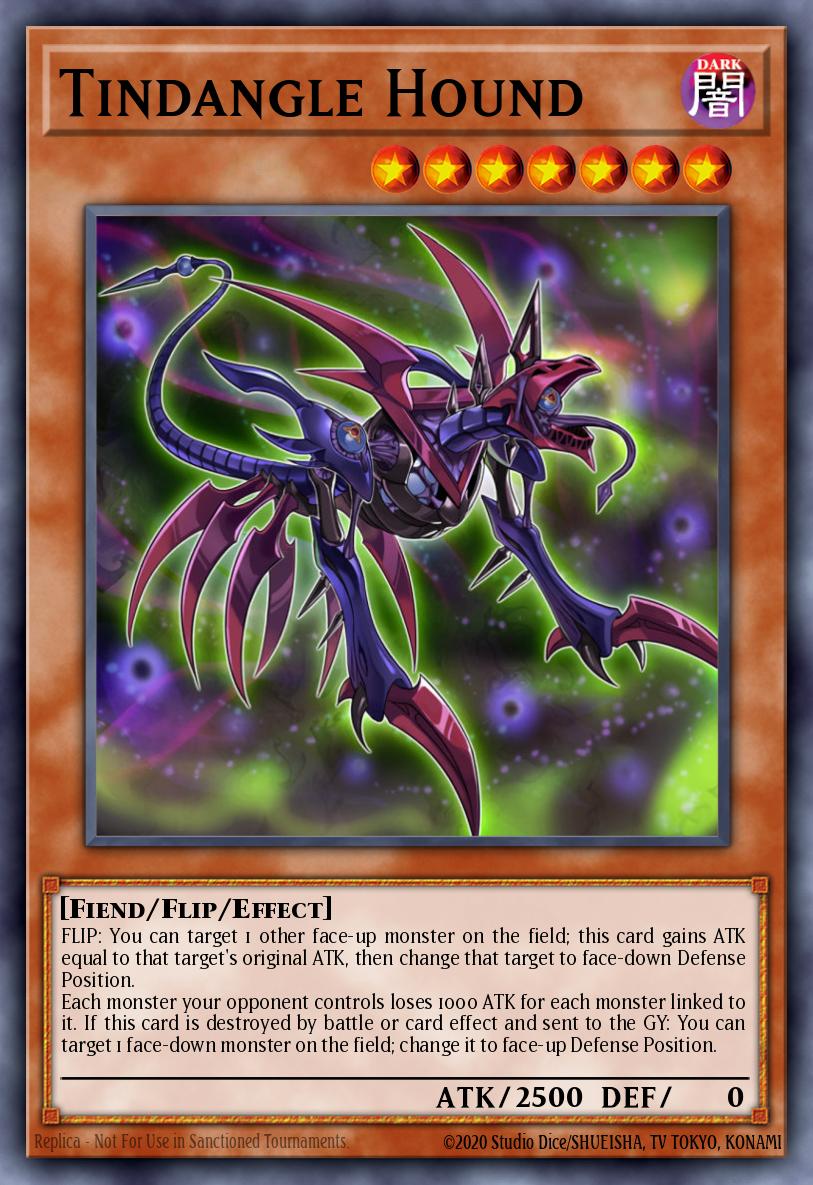
In 1929 Frank Belknap Long published the dimension-hopping horror story The Hounds of Tindalos. The titular hounds lurk within “the angles of time,” a hidden realm beyond the typical linear timeline inhabited by humanity. These horrifying hounds relentlessly pursue anyone who stumbles upon their extra-dimensional home, emerging into our reality from sharp edges and pointy corners. The Hounds of Tindalos were later adopted into HP Lovecraft’s Cthulu Mythos, which granted them a one-way ticket into pop-culture immortality, and into Arkham Horror.
Yu-Gi-Oh‘s Tindangle Monsters take this horror story and amp its mathematical aspects up to 11. The angular and alien nature of the hounds of Tindalos is emphasized by monsters with geometrics designs like Tindangle Base Gardna, and Tindangle Jhrelth, which more closely resemble DnD dice than dogs. Their suite of support cards are named after famous mathematicians like Euler’s Circuit, Gergonne’s End, and Nagel’s Protection. If you’re a fan of dogs, maths, Flip summoning, and early 20th century horror stories… That’s a very specific list of things to be interested in, but the Tindangle may be just the archetype for you.
3. The Timelords
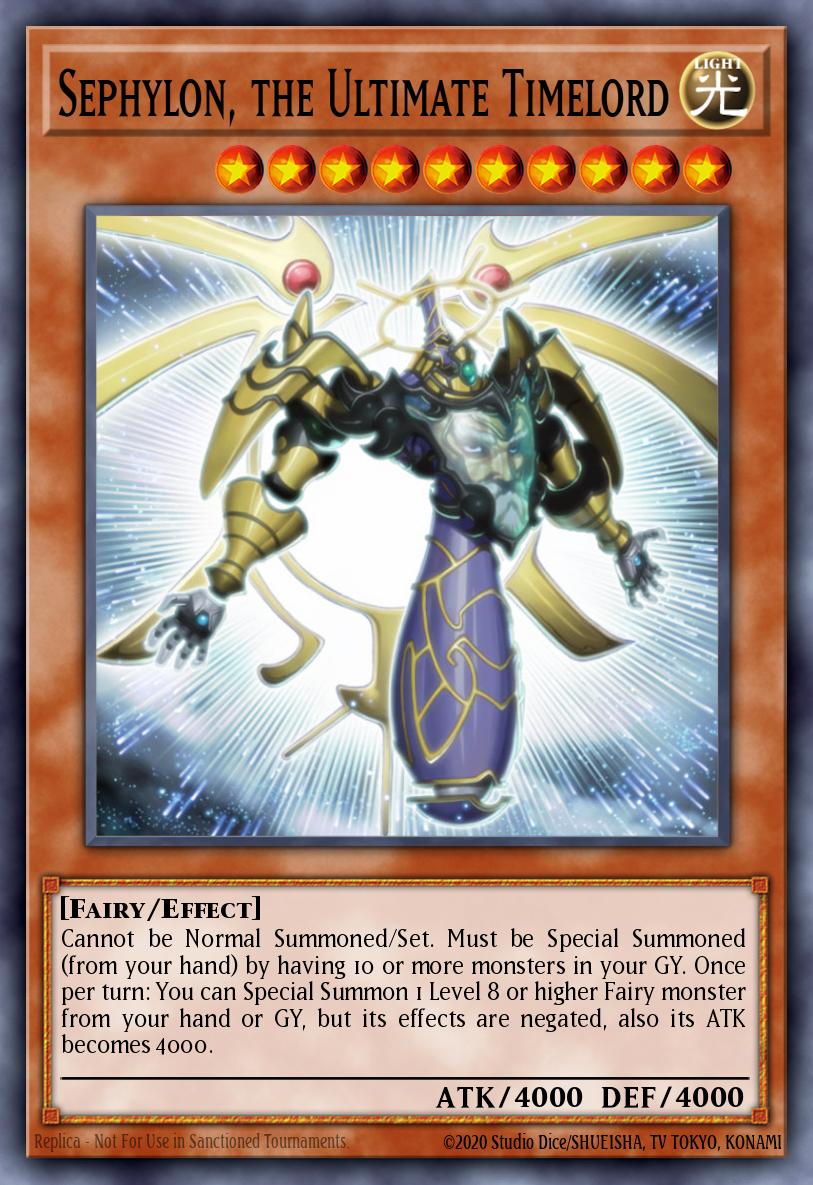
As this archetype is called the “Timelords,” you might expect it to be a Doctor Who reference. In fact, they’re actually a reference to Kaballah, an esoteric school of mysticism. Kaballah is a nuanced and complex belief system, and to explain its principles would be beyond the scope of this article. For our purposes, we just need to understand that central to Kaballah is the tree of life. This tree is divided into 10 spheres known as “sephirot”. Each of the sephirot represents an aspect of life such as wisdom, mercy, or majesty. In Yu-Gi-Oh! each of the Sephirot is represented by a different Timelord. With the eleventh Timelord, and the initial boss monster of the archetype, Sephylon, the Ultimate Timelord representing Da’at, the mystical state of completion attained by unifying the 10 sephirot. This is referenced by Sephlyon requiring 10 monsters in the graveyard to be Special Summoned.
To add another layer of symbolism, the Timelords also derive their names from archangels, substituting the final letters of their name for the letters “ion.” Gabrion, Raphion, and Michion are named after the archangels Gabriel, Raphael, and Michael, respectively. With other members of the archetype having equally celestial names. Don’t let anybody tell you that playing card games never taught you anything. Yu-Gi-Oh! can wade pretty deeply into theology when it wants to.
2. Kozmo
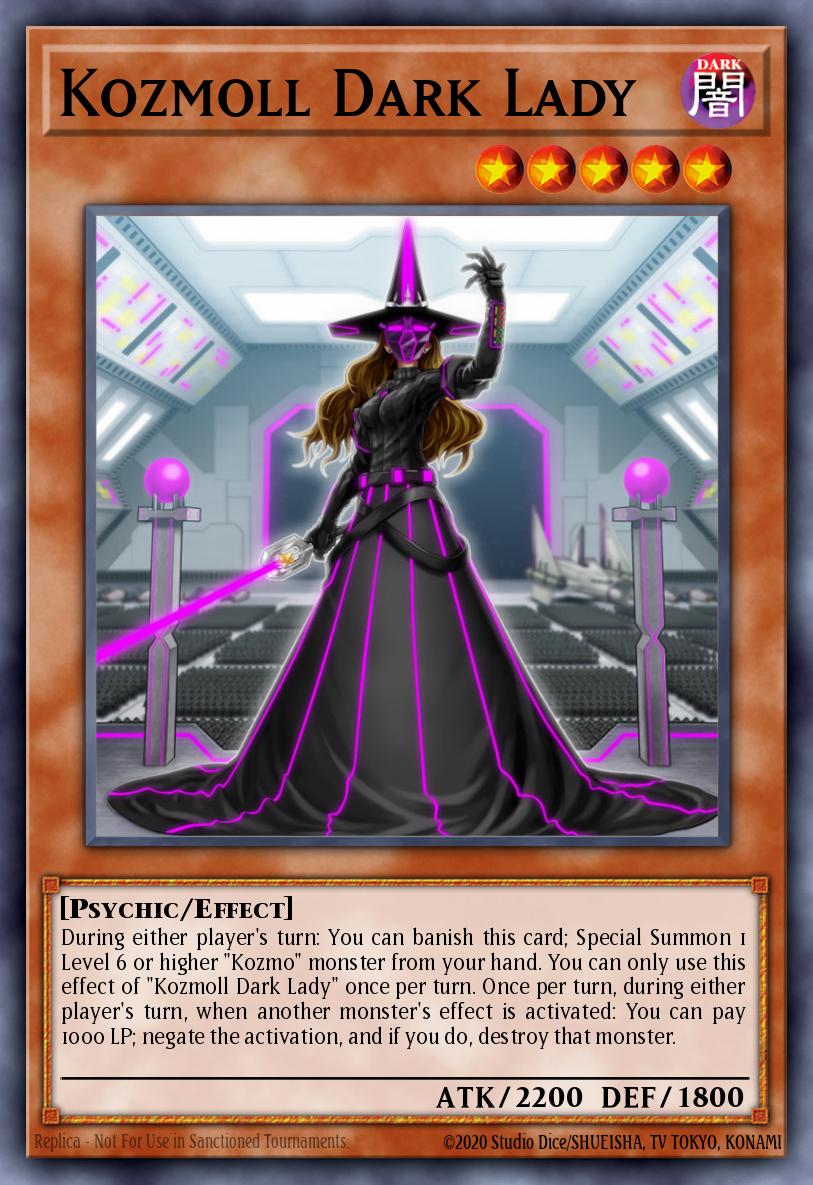
Star Wars and The Wizard of Oz are both pretty popular but also have absolutely nothing to do with one another. At least that was the case until 2015 when Yu-Gi-Oh! debuted the Kozmo archetype. Complete with Stormtroopers that are also flying monkeys, Glinda the Good Witch by way of Yoda, of course, an R2-D2 inspired Tinman, and a Scarecrow C3PO.
The lower level cards in this archetype are all Psychics since Yu-Gi-Oh! has no Jedi monster type. They are divided between LIGHT aligned Kozmo monsters, and DARK aligned Kozmoll monsters. Whether they’re Kozmo or Kozmoll they’re both capable of banishing themselves to bring out powerful machine type finishers based on iconic Star Wars spaceships like the Death Star, an Imperial Star Destroyer, and the Millenium Falcon. Whether you’re a fan of Wicked or Revenge of the Sith, the Kozmo cards deliver the crossover that you never knew that you always wanted.
1. Prank-Kids

The Prank-Kids are just a bunch of elemental children playing pranks right? Surely there’s no deeper meaning here? On the contrary, the Prank-Kids are actually a reference to the work of German theoretical physicist Max Planck. Planck had a long and varied career and is known as one of the fathers of quantum mechanics. The Prank-Kids name is even a punny reference to the physicist that they’re named after. Really, they should be called Planck-kids. Planck devised units of measurement known as “Planck units,” the smallest possible scale on which things can be measured. The Prank-Kids are all infinitesimally tiny elemental embodiments that would need to be measured using Planck units.
If Max Planck were alive today, he might just be winning his fair share of duels by Fusion and Link summoning these microscopic monster cards.
Conclusion
Here we have five archetypes with unexpected origins. What’s great is that these cards might all bump into each other in the middle of any given duel. You can send your Sushi battleship out to fight against one of the Hounds of Tindalos or have Dorothy click her cosmic heels together to take on a teeny tiny child, whose name riffs on a German Physicist. Of course, these archetypes are far from the only wacky ones out there. Yu-Gi-Oh! is full of off the wall card concepts, and they won’t be going anywhere any time soon.

